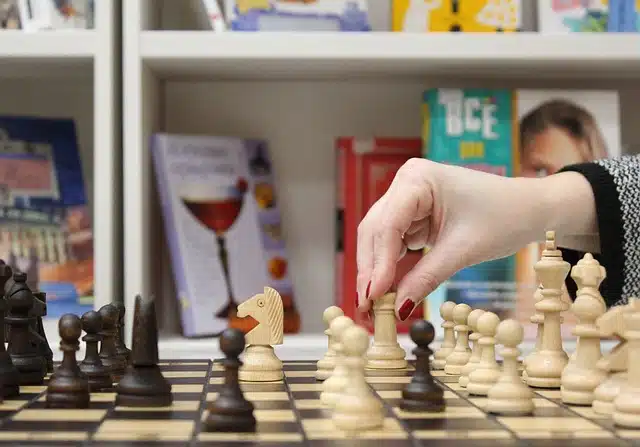
Castling is a chess move.
Castling is a defensive move that takes place in a chess game when the rook and the king of the same side change their position simultaneously . This is the only move that allows two pieces (rook and king) to move at the same time.
To develop castling it is necessary that the king and rook have not been moved previously; that the king is not in check; that the squares (squares) that are between the two pieces are unoccupied; and that none of the squares through which the king will pass and stay are under attack .
Types of castling
There are two types of castling. Short castling is carried out with the rook located closest to the king , while long castling is carried out with the rook furthest from the king. It is important to keep in mind that, unlike what happens with the king, the selected rook can be under attack. The king, on the other hand, could have found himself in check at another preceding moment.
Castling can be done at any time during the game , although, due to the aforementioned rules, there is no possibility of doing so before the fourth move (since the bishop and knight must first be removed from the path, something that also requires the movement of a pawn). .

The king and the rook are the pieces involved in a castling.
Chess difficulty
It is important to note that chess is one of the most popular games in history, and is considered extremely difficult to master. This seems contradictory to the apparent simplicity of its rules : anyone can learn them with a little patience and dedication, but only a few can become great players.
One of the reasons for such difficulty lies in the need to put together a strategy, something that, in turn, requires a great deal of patience and attention. To beat a good chess player we need to think carefully about each of our moves, evaluating in advance all the alternatives that come to mind to avoid fatal errors. Before taking a step, we must imagine what our opponent would do in response, and even what possibilities his potential move would give us, until we reach the limit of our intellect.
Castling and strategy
Castling is not a complex move in itself: as expressed in the previous paragraphs, it has a series of rules that prevent us from executing it at any time, but it is not a move reserved for chess geniuses. However, like almost all others, there is no point in forcing it or using it in a systematic and predictable way, since it does not guarantee victory.
Precisely, the worst thing we can do during a chess game is to present our strategy through predictable moves. Of course, achieving an apparently spontaneous style that adapts to the different situations created by the opponents is not easy, especially because of the rigidity of the rules of the game itself, which provides a very limited series of possibilities to the players.
Conventions dictate that castling should be used as early as possible, within the limits of the rules, but this can also lead to plays becoming predictable; Therefore, the ideal is to surprise the opponent with original plays that confuse him and prevent him from knowing when or if we will use it.
The term in colloquial language
In colloquial language, on the other hand, the idea of castling refers to an exchange of positions .
If the technical director of a football team decides, without replacing players, to place a striker as a midfielder, in turn making a midfielder go on to play as a striker, it can be said that he has castled.
